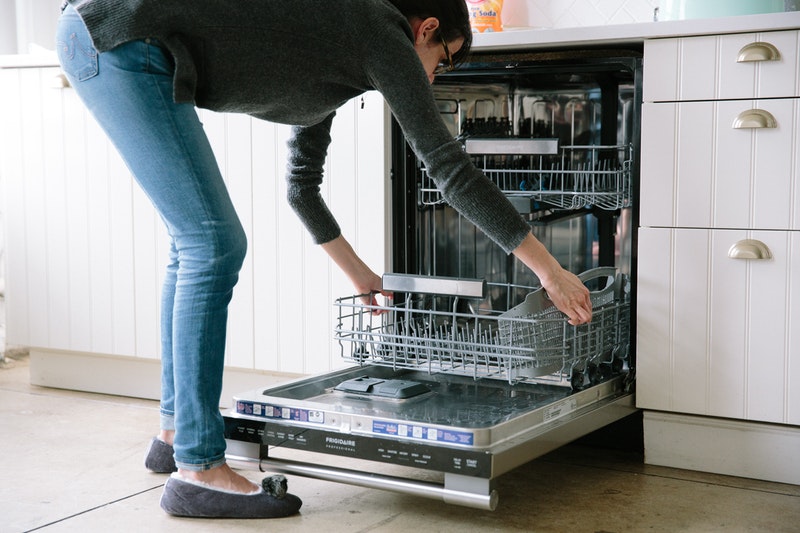Most of us rely heavily on our dishwashers to take the ache and pain out of washing up. Loading up the dishwasher is definitely much easier than scrubbing away at it all yourself! But, perhaps unsurprisingly given how much we put these machines through on a daily basis, dishwashers are among the most likely home utilities to suffer from unexpected issues.
If you’re lucky, you will have warranty on your machine that will cover any costs incurred in repairing or replacing the machine. However, if you don’t, you will no doubt want to solve the problem yourself if at all possible. Here are some of the most common dishwasher problems that you can solve on your own.
Dishes are Covered in Residue
The first thing you need to check is that you aren’t overloading the machine. If you pack everything in too tightly, the water will not have room to circulate and won’t be able to reach all the places necessary. Sometimes, individual utensils can affect the spinning arm at the bottom of the machine or they will block the stream of water from it.
If you are sure that the issue isn’t with how you are loading the machine, it’s then time to check for a problem with the machine itself. In particular, be on the look out for any blockages caused by grease or other debris. Try spinning the arm at the bottom of the machine by hand and make sure that it is able to physically move. If it doesn’t take it out, clean it, and reseat it.
The Machine is Leaking
The first thing to check is that the door is able to close properly. Also, be on the lookout for any cracks or breaks around the edge that might be allowing water to escape. Sometimes, cleaning the gasket with a strong disinfectant can dissolve debris which would otherwise be preventing the door from closing properly.
Another potential issue is with the float switch. This is the mechanism that indicates the water level of the dishwasher; if it is stuck in the down position, this can cause a machine to overfill, and subsequently leak all over the floor.
Dishes Aren’t Drying
The vast majority of the time, this issue is caused by an underlying problem with the heating element. Alternatively, it can be an issue with the thermostat in your machine, which is reporting an incorrect temperature. This makes the machine switch off before it has finished drying the dishes. The high limit is usually located at the bottom of the dishwasher, behind an access panel. Use a multimeter to ensure it is working correctly.
A Bad Smell
This is usually an indication that some food has become lodged in the machine somewhere and is now beginning to mould or rot. See if you can sniff out the source of the smell, and then clean your machine as appropriate.
If the smell isn’t like rotting food, but smells more like a chemical or plastic smell, it’s possible that something has fallen onto the heating element and has then melted.
Can’t Fix It Yourself?
If you find that the above solutions aren’t working, or you encounter another problem that you can’t find a solution for, it’s time to call in the professionals. A business like Hotpoint dishwasher repair can help you get your dishwasher up and running again, for a lot less than it would cost to buy a new machine outright.
Fortunately, most issues you encounter with your dishwasher will be relatively easy, and free, to fix. However, be aware that even the simplest repairs can be disastrous if you don’t know what you are doing. Don’t undertake any repairs you aren’t confident with.


